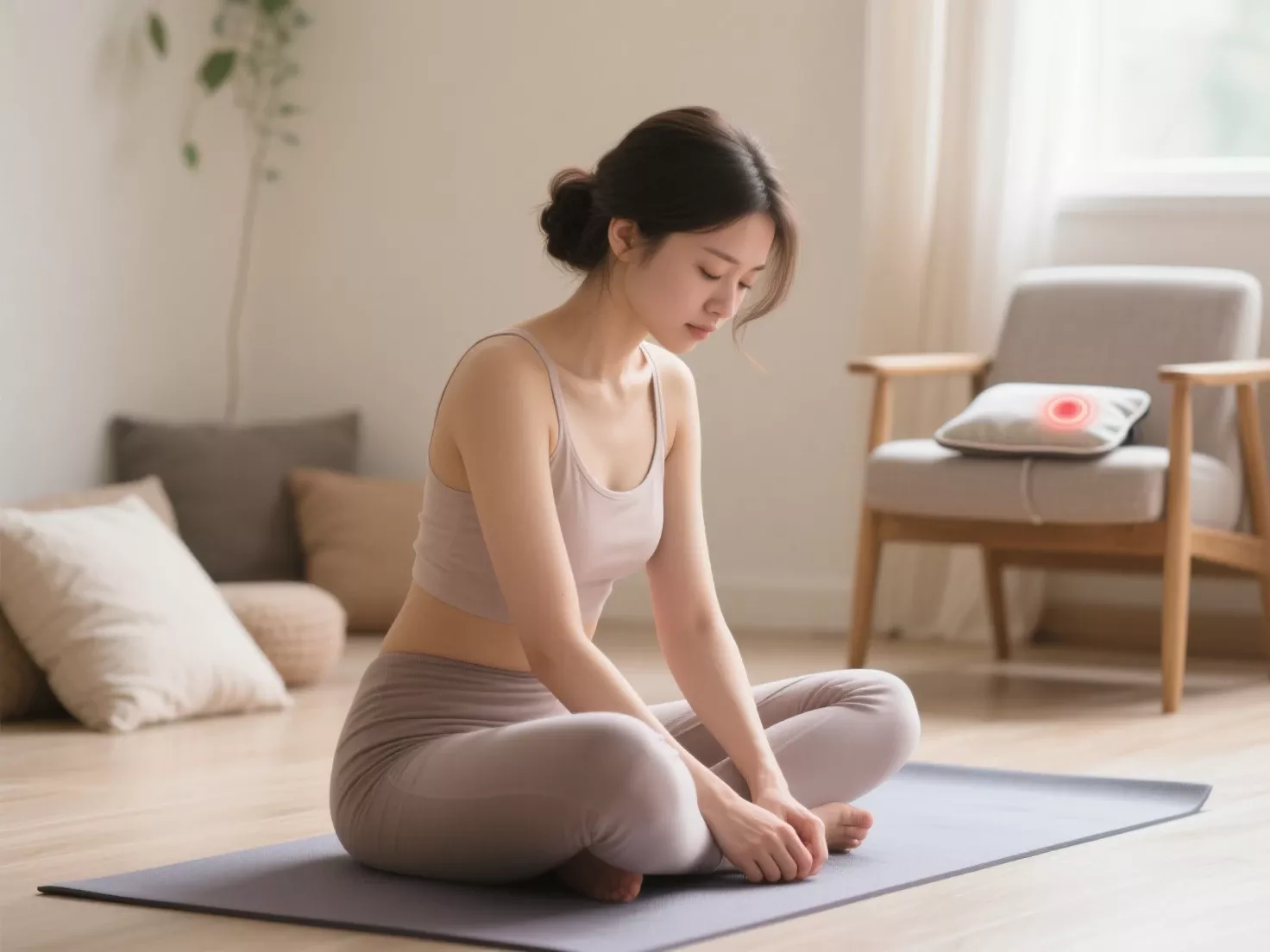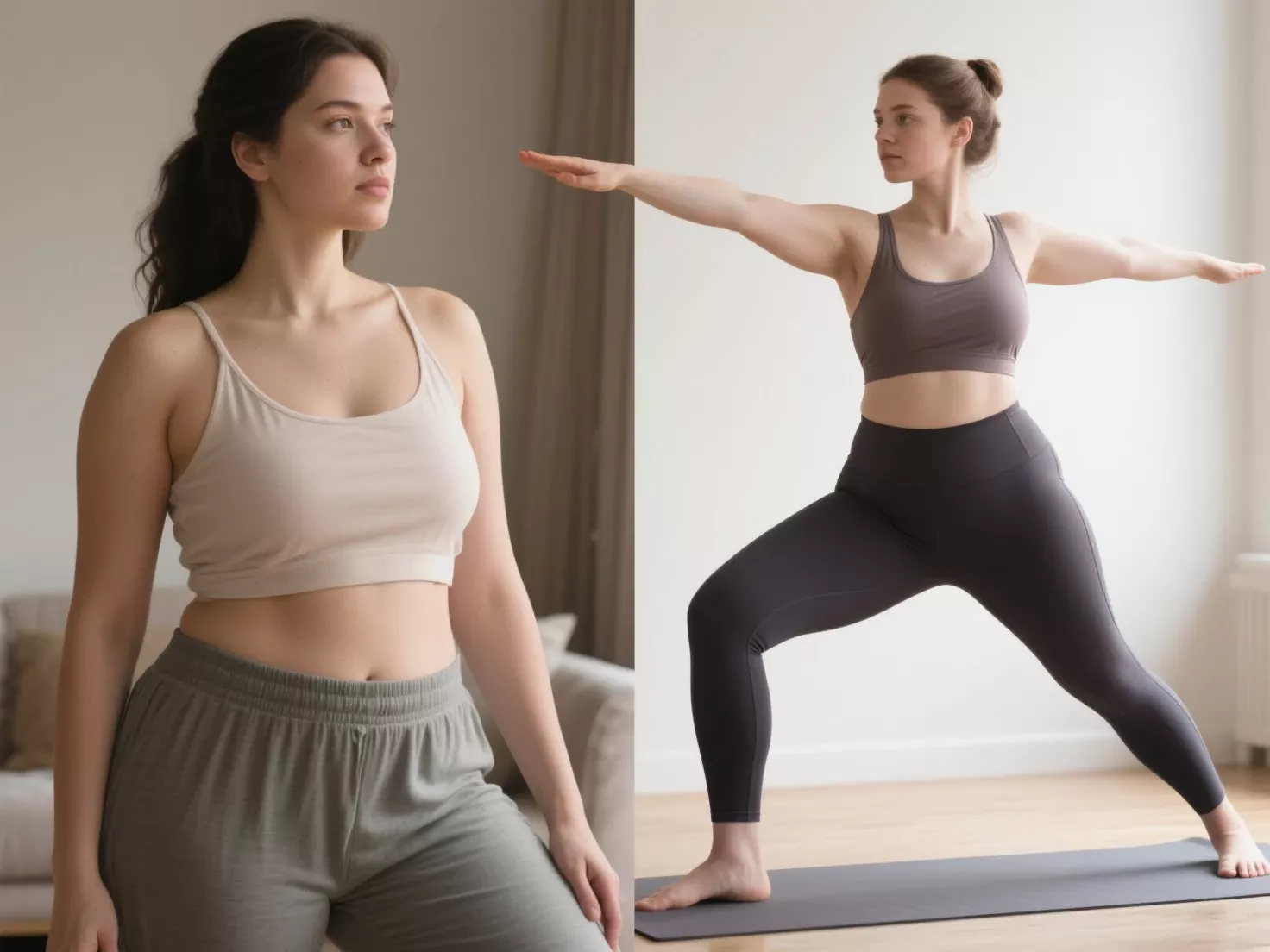During menstruation, the body undergoes a range of hormonal, physical, and emotional changes.
While light to moderate exercise can be incredibly beneficial — helping to reduce cramps, regulate mood, and improve blood circulation — not all forms of exercise are appropriate during this time.
Pushing your body too hard or performing certain movements may worsen symptoms such as cramps, fatigue, and even dizziness.

In this article, we’ll explore which exercises are not good for your period, why they should be avoided, and what types of movement are safer and more beneficial during menstruation.
🩸 What Happens to the Body During Menstruation?
Before diving into the specific exercises to avoid, it’s important to understand what the body experiences during a menstrual cycle:
-
Hormone levels drop, particularly estrogen and progesterone, leading to fatigue and mood fluctuations.
-
The body loses iron, which can contribute to lower energy and stamina.
-
The uterus contracts to shed its lining, causing cramps and abdominal discomfort.
-
Many people experience bloating, breast tenderness, lower back pain, and digestive changes.
Because of these physiological shifts, your exercise routine may need to be adjusted to avoid additional stress on the body.
❌ Exercises Not Recommended During Periods
1. High-Intensity Interval Training (HIIT) or Intense Cardio
HIIT workouts involve short bursts of maximum effort followed by rest or lower-intensity movement.
Why to avoid it:
-
Increases heart rate and body temperature, which may lead to dehydration and fatigue during a time when your body is already more sensitive.
-
Can aggravate cramps and joint pain, especially in the first two days of the cycle.
Examples:
-
Sprinting intervals
-
Jump squats
-
Burpees
-
High-impact aerobics
If you still want to engage in cardio, opt for brisk walking, cycling at a moderate pace, or light dancing.
2. Heavy Weightlifting or Powerlifting
While strength training is excellent for overall health, lifting very heavy weights during your period can put unnecessary strain on the body.
Why to avoid it:
-
Hormonal fluctuations can cause ligaments and joints to loosen, increasing the risk of injury.
-
Engaging the core and pelvic muscles too intensely can worsen cramping and pelvic discomfort.
-
The body’s natural strength may decrease slightly during menstruation, increasing injury risk.
What to do instead:
Try light resistance training using body weight or light dumbbells, and avoid exercises that place pressure on your lower abdomen.

3. Inverted Yoga Poses
In yoga, inversions are poses where the head is lower than the heart—such as headstands, shoulder stands, and handstands.
Why to avoid it (according to traditional yoga):
-
These poses reverse the natural flow of energy, known in yogic philosophy as Apana Vayu, which is responsible for downward elimination (including menstrual flow).
-
Some practitioners and yoga schools (like Iyengar) recommend avoiding inversions during menstruation out of respect for the body’s natural cleansing process.
Examples:
-
Headstand (Sirsasana)
-
Shoulder Stand (Sarvangasana)
-
Plow Pose (Halasana)
-
Handstand (Adho Mukha Vrksasana)
Note: Some modern yoga practitioners believe these poses are safe if you feel fine doing them, but it’s important to listen to your body and your personal belief system.
4. Core-Intensive Workouts
While maintaining a strong core is important, exercises that heavily engage abdominal muscles can make menstrual cramps feel worse.
Why to avoid it:
-
Poses or exercises like sit-ups, leg lifts, or crunches increase intra-abdominal pressure and can worsen uterine contractions.
-
They may also increase bloating and discomfort.
Examples:
-
Bicycle crunches
-
Plank to knee drives
-
Russian twists
-
Mountain climbers
If you want to work on your core, choose gentler options like Cat-Cow stretch or Supine Pelvic Tilts.
5. Hot Yoga / Bikram Yoga
Hot yoga classes are conducted in a room heated to 35–40°C (95–105°F), and typically last 60–90 minutes.
Why to avoid it:
-
You are already losing fluids and iron during your period, and excessive sweating can increase the risk of dehydration or dizziness.
-
It may worsen headaches or nausea, especially during the first few days of the cycle.
Safer alternative:
Choose gentle Hatha or Yin Yoga in a cool, quiet space.
🧘 What Exercises Can You Do During Your Period?
While certain workouts should be avoided, others can actually help alleviate menstrual discomfort and boost mood.
✅ Recommended Exercises:
| Type of Exercise | Benefits During Menstruation |
|---|---|
| Gentle Yoga (no inversions) | Eases cramps, stretches the lower back, calms the mind |
| Walking | Improves circulation and lifts mood |
| Swimming (light) | Relieves joint pain and promotes full-body relaxation |
| Pilates (gentle) | Strengthens the core and improves posture without strain |
| Light Stretching | Reduces stiffness and encourages muscle recovery |
💡 Tips for Exercising Safely During Periods
-
Stay Hydrated: Drink plenty of water before, during, and after exercise.
-
Wear comfortable, breathable clothing to prevent overheating.
-
Use a heating pad post-workout to soothe cramps.
-
Avoid exercising on an empty stomach, especially if you feel weak or dizzy.
-
Rest when needed: Some days, the best workout is no workout at all.
❓ Frequently Asked Questions (FAQs)
1. Can I work out on the first day of my period?
Yes, but opt for light movement like walking or stretching. Avoid high-impact routines if you’re experiencing strong cramps or heavy flow.
2. Is it dangerous to do yoga inversions during menstruation?
Not physically dangerous in most cases, but some traditions discourage it for energetic and philosophical reasons. Listen to your body.
3. What should I do if I feel too tired to exercise?
Rest. Your body is working hard internally, and rest is also productive. You can resume activity when your energy returns.
4. Can exercise make period cramps worse?
Yes, especially if it involves high intensity or core strain. Choose gentle movement to help relieve cramps.
🌺 Conclusion
Your menstrual cycle is a time when your body undergoes significant physical and hormonal changes.
Not all exercises are beneficial during this time, and overexerting yourself can lead to increased pain, fatigue, or even injury.
It’s important to listen to your body, modify your routine, and be gentle with yourself.
While high-intensity workouts, heavy lifting, core crunches, hot yoga, and inversions may not be ideal during your period, there are still plenty of ways to stay active without compromising your comfort or health.
Ultimately, rest, nourishment, and self-awareness should guide your fitness routine during menstruation.



